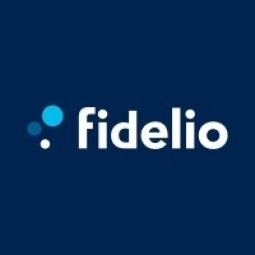Customer Company Size
Mid-size Company
Region
- America
Country
- Canada
Product
- Fidelio
Implementation Scale
- Enterprise-wide Deployment
Impact Metrics
- Productivity Improvements
- Cost Savings
Technology Category
- Functional Applications - Enterprise Resource Planning Systems (ERP)
Applicable Industries
- Food & Beverage
Applicable Functions
- Discrete Manufacturing
- Logistics & Transportation
Use Cases
- Inventory Management
- Supply Chain Visibility
Services
- System Integration
About The Customer
Les Distributions Mondoux Inc. is a company that specializes in the manufacturing, repackaging, and distribution of treats and sweets. The company has been in business since 1967 and has seen significant growth since the 1980s, with its activities spreading across Ontario and the eastern provinces. Mondoux Distributions generates a revenue of 50 million dollars and employs 110 people. The company is located in Laval, Canada. Despite its success, the company faced challenges with its old computer system, which was unable to provide the required information for optimal decision-making and presented issues with corrupted data.
The Challenge
Mondoux Distributions, a company in the manufacturing, repackaging, and distribution of treats and sweets, has seen significant expansion since the 1980s. Its activities are spreading across Ontario and the eastern provinces. However, Mondoux's old computer system was unable to provide the required information to make optimal decisions during their continuous growth. This system was limiting their activities and presented corrupted data issues. The company needed a solution that could handle their expanding operations and provide accurate, real-time data for decision-making.
The Solution
To address the challenges faced by Mondoux Distributions, the company implemented the Fidelio system. Fidelio is a flexible, intuitive, and completely integrated system with powerful drill-down capacities. It was chosen for its functional diversity, which was evaluated by Mondoux's end-users, and its capacity to interface with Omniciel. The implementation of Fidelio was marked by the sustained involvement of Commsoft employees, who provided knowledge and challenged business processes. The Fidelio modules used by Mondoux include finance, sales, e-commerce, purchasing, inventory, manufacturing, and a Route Manager interface.
Operational Impact
Quantitative Benefit

Case Study missing?
Start adding your own!
Register with your work email and create a new case study profile for your business.
Related Case Studies.

Case Study
The Kellogg Company
Kellogg keeps a close eye on its trade spend, analyzing large volumes of data and running complex simulations to predict which promotional activities will be the most effective. Kellogg needed to decrease the trade spend but its traditional relational database on premises could not keep up with the pace of demand.

Case Study
HEINEKEN Uses the Cloud to Reach 10.5 Million Consumers
For 2012 campaign, the Bond promotion, it planned to launch the campaign at the same time everywhere on the planet. That created unprecedented challenges for HEINEKEN—nowhere more so than in its technology operation. The primary digital content for the campaign was a 100-megabyte movie that had to play flawlessly for millions of viewers worldwide. After all, Bond never fails. No one was going to tolerate a technology failure that might bruise his brand.Previously, HEINEKEN had supported digital media at its outsourced datacenter. But that datacenter lacked the computing resources HEINEKEN needed, and building them—especially to support peak traffic that would total millions of simultaneous hits—would have been both time-consuming and expensive. Nor would it have provided the geographic reach that HEINEKEN needed to minimize latency worldwide.

Case Study
Energy Management System at Sugar Industry
The company wanted to use the information from the system to claim under the renewable energy certificate scheme. The benefit to the company under the renewable energy certificates is Rs 75 million a year. To enable the above, an end-to-end solution for load monitoring, consumption monitoring, online data monitoring, automatic meter data acquisition which can be exported to SAP and other applications is required.

Case Study
Coca Cola Swaziland Conco Case Study
Coco Cola Swaziland, South Africa would like to find a solution that would enable the following results: - Reduce energy consumption by 20% in one year. - Formulate a series of strategic initiatives that would enlist the commitment of corporate management and create employee awareness while helping meet departmental targets and investing in tools that assist with energy management. - Formulate a series of tactical initiatives that would optimize energy usage on the shop floor. These would include charging forklifts and running cold rooms only during off-peak periods, running the dust extractors only during working hours and basing lights and air-conditioning on someone’s presence. - Increase visibility into the factory and other processes. - Enable limited, non-intrusive control functions for certain processes.

Case Study
Temperature Monitoring for Restaurant Food Storage
When it came to implementing a solution, Mr. Nesbitt had an idea of what functionality that he wanted. Although not mandated by Health Canada, Mr. Nesbitt wanted to ensure quality control issues met the highest possible standards as part of his commitment to top-of-class food services. This wish list included an easy-to use temperature-monitoring system that could provide a visible display of the temperatures of all of his refrigerators and freezers, including historical information so that he could review the performance of his equipment. It also had to provide alert notification (but email alerts and SMS text message alerts) to alert key staff in the event that a cooling system was exceeding pre-set warning limits.

Case Study
Coca-Cola Refreshments, U.S.
Coca-Cola Refreshments owns and manages Coca-Cola branded refrigerators in retail establishments. Legacy systems were used to locate equipment information by logging onto multiple servers which took up to 8 hours to update information on 30-40 units. The company had no overall visibility into equipment status or maintenance history.







